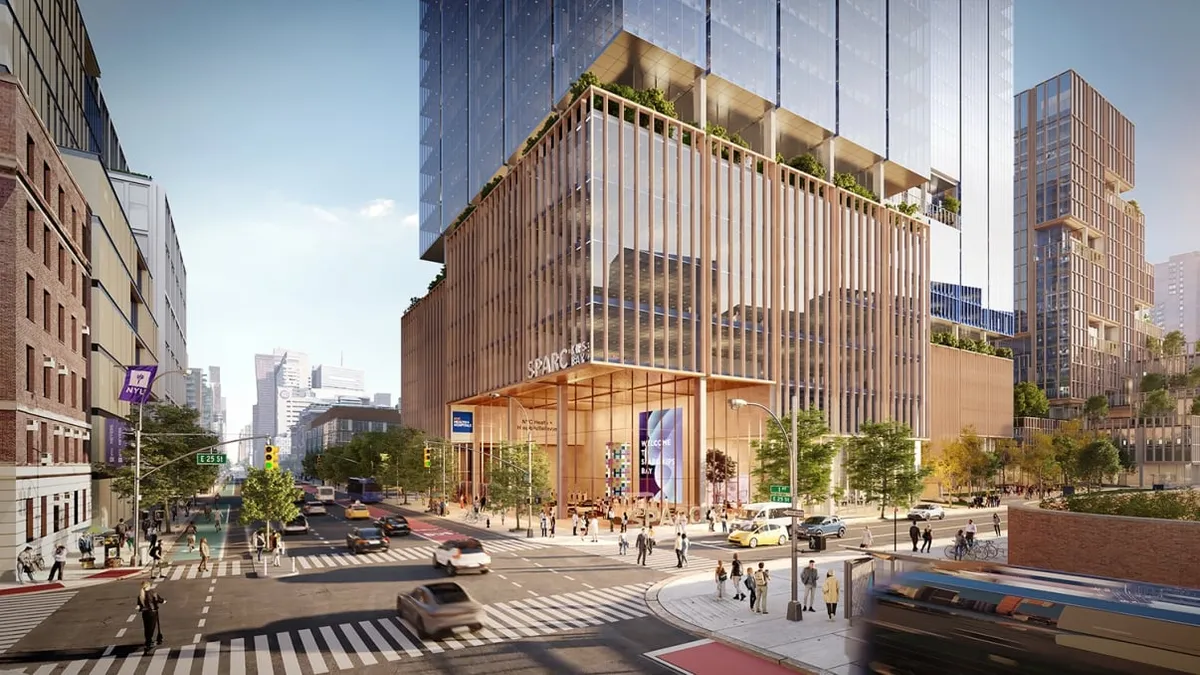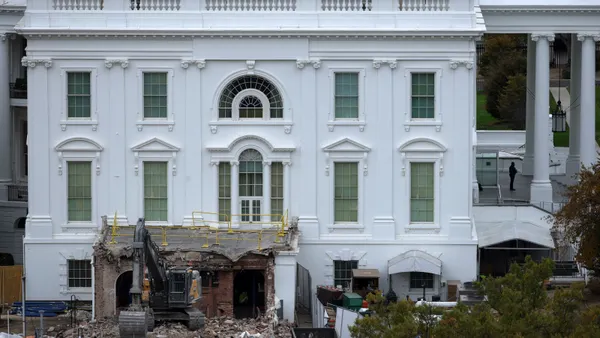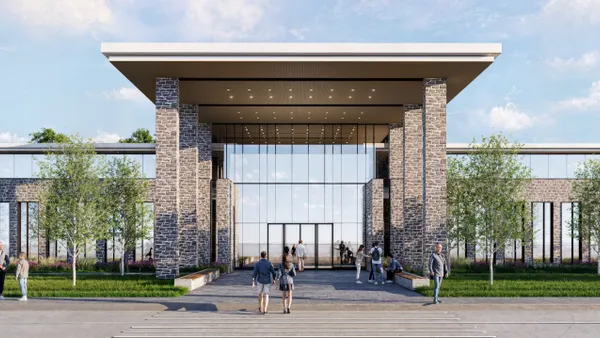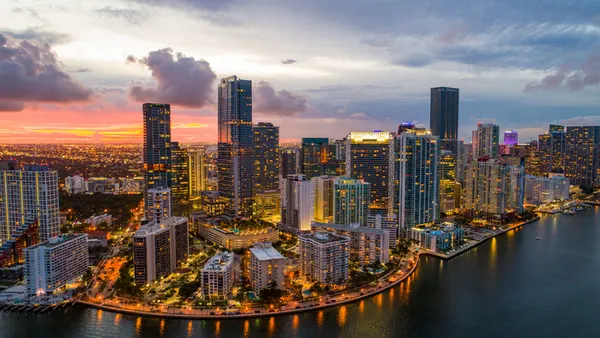Dive Brief:
- The New York City Economic Development Corp. has released a request for proposals for a construction manager to oversee the first phase of the Science Park and Research Campus Kips Bay project, according to a news release. The RFP will close Tuesday, July 16.
- The $1 billion construction contract includes the transformation of Hunter College’s Brookdale campus in Manhattan into a life sciences innovation hub. The NYCEDC expects construction to begin at the end of 2025 and project completion by 2031.
- The redevelopment, set to transform an entire city block into academic, public and research facilities, recently entered the Uniform Land Use Review Procedure, a standardized process for public review of applications affecting the city’s land use.
Dive Insight:
The SPARC Kips Bay project, located near the East River, forms part of a broader strategy to improve New York City’s waterfronts, transforming them into hubs of innovation and economic activity, said New York City Mayor Eric Adams in the release.
The SPARC Kips Bay redevelopment will feature new facilities for Hunter College School of Nursing, the CUNY Graduate School of Public Health and Health Policy and the Borough of Manhattan Community College’s healthcare programs.
Additionally, the project will include an ambulatory care center, a new forensic pathology center and nearly 2 acres of public improvements, including a new ADA-accessible pedestrian bridge at 25th Street.
‘Harbor of the Future’
The SPARC Kips Bay project aligns with other life sciences developments being planned in the Kips Bay neighborhood, such as Innovation East, which will replace a former public health lab.
Currently in the early stages of public review, the plan calls for 500,000 square feet of commercial life sciences space, entrepreneurial research labs for NYU Grossman School of Medicine and a multipurpose collaboration space.
The project, developed by Taconic Partners and DivcoWest, plans to incorporate LEED-Gold standard designs and flood-resilient systems.
These projects fit into Adams’ “Harbor of the Future” plan, which envisions New York City’s waterfronts as centers of innovation and economic growth. Both projects are key initiatives in New York City’s goal to create 10 million square feet of life sciences space by 2030, according to the release.















